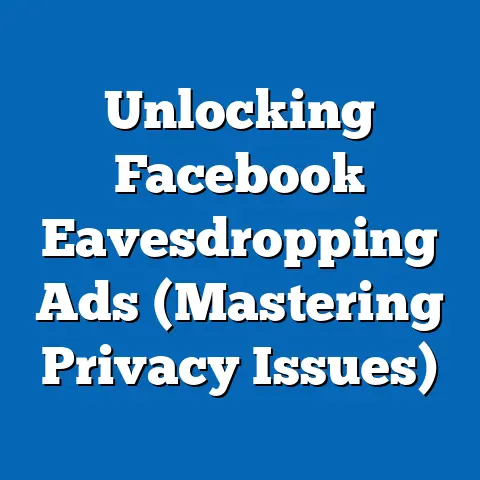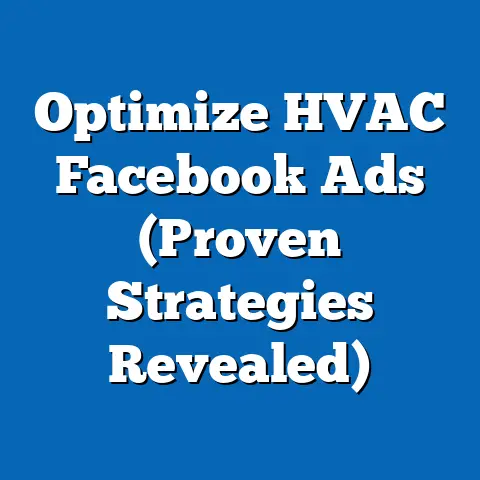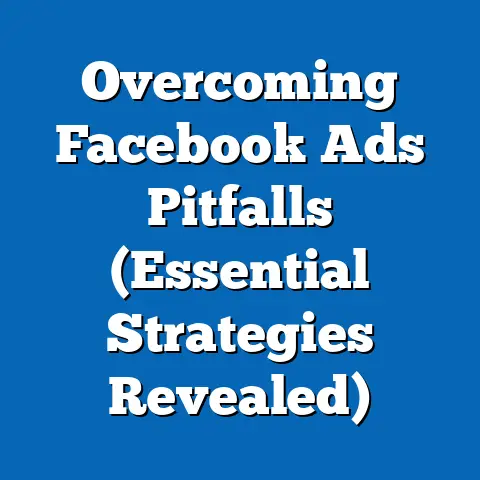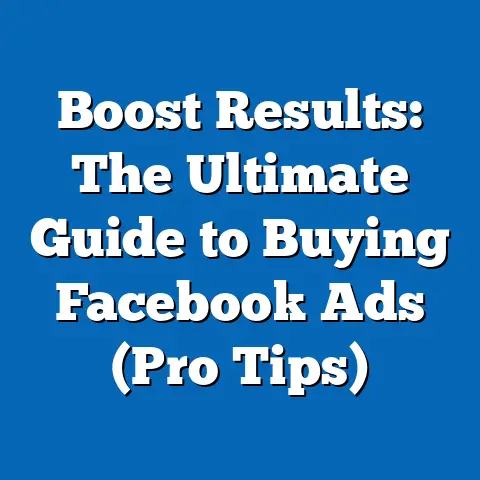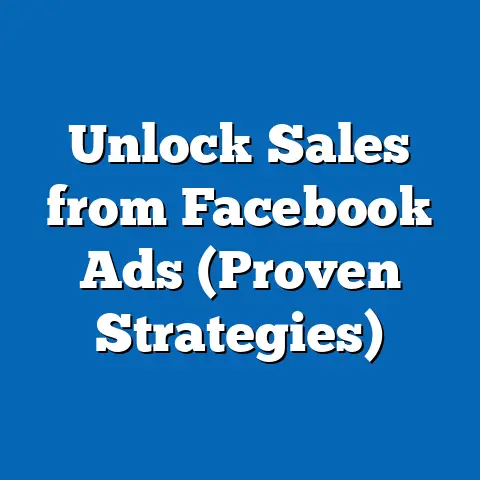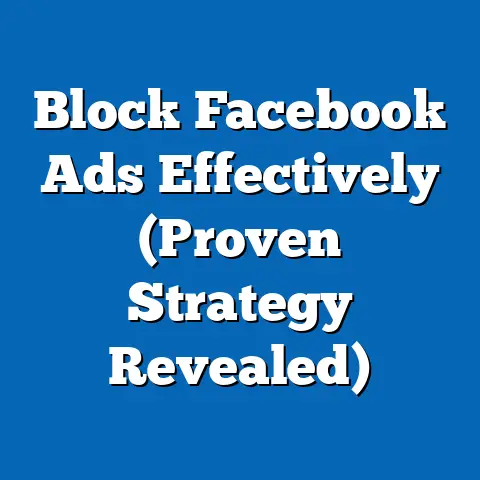Create Multiple Facebook Ads (Ultimate Guide for Success)
In today’s marketing landscape, sustainability isn’t just a buzzword; it’s a core value. Businesses are increasingly aware that long-term success hinges on sustainable practices, not just in their operations but also in their advertising strategies. We need to consider the impact of our marketing efforts, ensuring they align with ethical and environmentally conscious values. Digital platforms like Facebook, with their massive reach and sophisticated targeting capabilities, offer a powerful avenue for promoting sustainable products, practices, and a more responsible brand image.
I remember when I first started running Facebook ads; I thought throwing a single ad out there was enough. I was wrong. I quickly learned that a single ad is like casting one small net into a vast ocean – you might catch something, but you’re missing out on so much more. That’s where the power of creating multiple Facebook ads comes in.
Facebook ads are a potent tool for reaching specific audiences with tailored messages. But, simply having a Facebook ad isn’t enough. To truly maximize your impact, you need a diverse portfolio of ads, each designed to resonate with different segments of your audience and test various approaches. This is where the concept of creating multiple ads comes into play.
This article will serve as your ultimate guide on how to create multiple effective Facebook ads to ensure marketing success while aligning with sustainable practices. I’ll walk you through every step, from understanding why multiple ads are crucial to crafting compelling content and optimizing your budget. Let’s dive in and unlock the full potential of Facebook advertising!
Understanding the Importance of Multiple Ads
Why bother creating multiple Facebook ads when you could just focus on perfecting one? The answer lies in the multifaceted nature of your audience and the dynamic environment of the Facebook platform. Relying on a single ad is akin to putting all your eggs in one basket – risky and limiting.
Think of it this way: Your audience isn’t a monolithic entity. It’s composed of diverse individuals with varying needs, interests, and preferences. What resonates with one segment might completely miss the mark with another. By creating multiple ads, you can tailor your messaging and visuals to speak directly to each of these segments, increasing the likelihood of engagement and conversion.
One of the most significant benefits of running multiple ads is the ability to conduct A/B testing. A/B testing involves creating different versions of your ad, each with a slight variation (e.g., headline, image, call-to-action), and then comparing their performance to see which one resonates best with your audience. This allows you to continuously optimize your campaigns and improve your ROI.
I’ve seen firsthand how A/B testing can transform a struggling campaign into a roaring success. In one instance, I was working with a client who was launching a new line of eco-friendly cleaning products. Their initial ad was performing poorly, with low click-through rates and minimal conversions. We decided to create three different versions of the ad, each highlighting a different benefit of the product: its effectiveness, its natural ingredients, and its environmentally friendly packaging. After running the ads for a week, we discovered that the ad emphasizing the natural ingredients performed significantly better than the others. We then focused our efforts on optimizing that ad, and within a month, the campaign’s conversion rate had tripled.
The competitive landscape of Facebook advertising is another reason to embrace multiple ads. With millions of businesses vying for attention, it’s crucial to stand out from the crowd. Having a diverse portfolio of ads, each with a unique angle and message, can help you capture the attention of your target audience and differentiate your brand from the competition.
According to recent statistics, businesses that run multiple ad campaigns on Facebook see an average increase of 20% in click-through rates and a 15% increase in conversion rates. These numbers speak volumes about the power of diversity and optimization in Facebook advertising.
Key Takeaway: Creating multiple Facebook ads is essential for reaching diverse audiences, conducting A/B testing, and standing out in a competitive market.
Setting Clear Objectives
Before you even think about crafting your first ad, it’s crucial to define clear and measurable objectives. What do you want to achieve with your Facebook advertising campaign? Are you looking to increase brand awareness, generate leads, drive sales, or something else entirely?
Your objectives will serve as your North Star, guiding every decision you make throughout the ad creation process, from the messaging you use to the targeting strategies you employ. Without clear objectives, you’re essentially shooting in the dark, hoping to hit something without a clear target in mind.
Here are some common advertising goals and how they can be translated into specific, measurable objectives:
- Brand Awareness: Increase brand recognition among your target audience. A measurable objective could be to increase reach by 25% or increase brand mentions on social media by 10%.
- Lead Generation: Collect contact information from potential customers. A measurable objective could be to generate 50 new leads per week or decrease the cost per lead by 15%.
- Website Traffic: Drive traffic to your website. A measurable objective could be to increase website visits from Facebook ads by 30% or decrease the cost per click (CPC) by 20%.
- Sales: Increase online or offline sales. A measurable objective could be to increase online sales by 10% or increase foot traffic to your physical store by 5%.
It’s important to distinguish between vague objectives and well-defined ones. A vague objective might be “to increase sales,” while a well-defined objective would be “to increase online sales of our new eco-friendly product line by 15% within the next quarter.” The latter is specific, measurable, achievable, relevant, and time-bound (SMART), making it much easier to track progress and determine success.
When I’m working with a client, I always start by asking them about their overall business goals and then help them translate those goals into specific, measurable advertising objectives. This ensures that their Facebook advertising campaigns are aligned with their broader business strategy and that we have a clear framework for measuring success.
Key Takeaway: Define clear, measurable objectives before creating your ads. These objectives will guide your messaging, targeting, and overall campaign strategy.
Identifying Your Target Audience
Knowing your audience is paramount to creating effective Facebook ads. Facebook boasts a treasure trove of demographic and interest-based data, allowing you to laser-target your ads to the individuals most likely to be interested in your products or services.
Think of your target audience as the ideal customer for your business. Who are they? What are their interests? What are their pain points? The more you know about your audience, the better equipped you’ll be to craft ads that resonate with them and drive results.
Facebook Insights is a powerful tool for audience research. It provides valuable data on your existing Facebook followers, including their demographics, interests, and behaviors. You can also use Facebook’s Audience Insights tool to explore potential audiences based on various criteria, such as age, gender, location, interests, and behaviors.
But don’t limit yourself to Facebook’s tools. Conduct market research, analyze your customer data, and talk to your existing customers to gain a deeper understanding of their needs and preferences.
Audience segmentation is another crucial aspect of targeting. Instead of treating your entire audience as a single group, break them down into smaller segments based on shared characteristics. This allows you to create tailored ads that speak directly to the needs and interests of each segment.
For example, if you’re selling eco-friendly clothing, you might segment your audience based on their interest in sustainable living, their age group, and their location. You could then create separate ads for each segment, highlighting the specific benefits of your clothing that are most relevant to them.
I’ve found that creating detailed buyer personas can be incredibly helpful in the audience segmentation process. A buyer persona is a fictional representation of your ideal customer, based on research and data about your existing customers. By creating buyer personas, you can gain a deeper understanding of your audience’s motivations, pain points, and buying behaviors.
Key Takeaway: Understand your audience thoroughly through research, analysis, and segmentation. Create tailored ads that speak directly to the needs and interests of each segment.
Crafting Compelling Ad Content
Now that you have a clear understanding of your objectives and your target audience, it’s time to craft compelling ad content that will capture their attention and drive them to take action. A successful Facebook ad consists of several key components:
- Engaging Headlines: Your headline is the first thing people will see, so it needs to be attention-grabbing and relevant to your audience. Use strong verbs, ask questions, and highlight the key benefits of your product or service.
- Captivating Visuals: Images and videos are powerful tools for capturing attention and conveying your message. Use high-quality visuals that are relevant to your target audience and align with your brand identity.
- Persuasive Copy: Your ad copy should be clear, concise, and persuasive. Highlight the key benefits of your product or service and address the pain points of your target audience.
- Strong Calls-to-Action: Tell people what you want them to do. Use clear and concise calls-to-action, such as “Shop Now,” “Learn More,” or “Sign Up Today.”
When crafting your ad content, it’s important to consider the role of sustainability. If you’re promoting sustainable products or practices, be sure to highlight this in your ad copy and visuals. Use imagery that evokes a sense of environmental responsibility and highlight the positive impact your product or service has on the planet.
For example, if you’re selling organic cotton t-shirts, you might use an image of a lush cotton field and highlight the fact that your t-shirts are made from sustainably sourced materials and are free from harmful chemicals. You could also mention the positive impact your business has on local communities and the environment.
Different ad formats can be used to convey different messages or cater to different segments of your audience. Here are some common Facebook ad formats and how they can be used effectively:
- Image Ads: Simple and effective for showcasing products or services. Use high-quality images that are visually appealing and relevant to your target audience.
- Video Ads: Engaging and dynamic for telling stories and demonstrating product features. Use short, attention-grabbing videos that are optimized for mobile viewing.
- Carousel Ads: Showcase multiple products or services in a single ad. Use compelling visuals and concise descriptions for each item.
- Collection Ads: Create a visually immersive shopping experience. Use high-quality images and videos to showcase your products and make it easy for people to browse and purchase.
I always recommend testing different ad formats to see which ones perform best with your target audience. Don’t be afraid to experiment and try new things.
Key Takeaway: Craft compelling ad content that captures attention, highlights key benefits, and incorporates sustainable messaging. Experiment with different ad formats to see which ones resonate best with your audience.
Designing Multiple Ads with A/B Testing
A/B testing, also known as split testing, is a crucial technique for optimizing your Facebook advertising campaigns. It involves creating different versions of your ad, each with a slight variation, and then comparing their performance to see which one resonates best with your audience.
A/B testing allows you to make data-driven decisions about your ad design and messaging, rather than relying on guesswork or intuition. By continuously testing and optimizing your ads, you can improve your click-through rates, conversion rates, and overall ROI.
Here’s a step-by-step guide on how to set up A/B tests for multiple ads:
- Choose a Variable to Test: Select a specific element of your ad that you want to test, such as the headline, image, call-to-action, or targeting criteria.
- Create Multiple Versions of Your Ad: Create two or more versions of your ad, each with a different variation of the chosen variable. For example, if you’re testing headlines, you might create one ad with a benefit-driven headline and another with a question-based headline.
- Set Up Your A/B Test in Facebook Ads Manager: Facebook Ads Manager provides built-in tools for setting up A/B tests. You can specify the variable you want to test, the different versions of your ad, and the duration of the test.
- Run Your A/B Test: Allow your A/B test to run for a sufficient period of time to gather statistically significant data. The duration of the test will depend on your budget, audience size, and the expected difference in performance between the different versions of your ad.
- Analyze the Results: Once your A/B test is complete, analyze the results to see which version of your ad performed best. Facebook Ads Manager provides detailed data on the performance of each version, including click-through rates, conversion rates, and cost per conversion.
- Iterate on Your Ad Designs: Based on the results of your A/B test, iterate on your ad designs and create new versions that incorporate the winning elements. Continue testing and optimizing your ads to continuously improve your performance.
When conducting A/B tests, it’s important to focus on testing one variable at a time. This allows you to isolate the impact of each variable and determine which ones are most effective.
I recommend starting with the variables that are most likely to have a significant impact on your performance, such as the headline, image, and call-to-action. Once you’ve optimized these elements, you can move on to testing other variables, such as the targeting criteria and the ad placement.
Key Takeaway: Use A/B testing to continuously optimize your ad designs and messaging. Focus on testing one variable at a time and iterate on your ads based on the results.
Budgeting and Bidding Strategies
Budgeting is a critical aspect of creating multiple Facebook ads. It’s essential to allocate your resources effectively to maximize your reach and impact. When setting your budget, consider the following factors:
- Your Advertising Goals: What are you trying to achieve with your campaign? Are you looking to increase brand awareness, generate leads, or drive sales? Your goals will influence the amount you need to spend.
- Your Target Audience: How large is your target audience? The larger your audience, the more you’ll need to spend to reach them.
- Your Competition: How competitive is your industry? If you’re in a highly competitive industry, you’ll need to spend more to stand out from the crowd.
- Your Budget Constraints: How much can you afford to spend on Facebook advertising? It’s important to set a budget that you can comfortably afford and that aligns with your overall marketing strategy.
Facebook offers two main budgeting strategies:
- Daily Budget: Set a fixed amount that you’re willing to spend each day. This is a good option if you want to control your spending on a daily basis.
- Lifetime Budget: Set a fixed amount that you’re willing to spend over the entire duration of your campaign. This is a good option if you want to control your spending over the long term.
When it comes to bidding strategies, Facebook offers several options, each designed to optimize for different campaign objectives:
- Cost Per Click (CPC): Pay each time someone clicks on your ad. This is a good option if you’re looking to drive traffic to your website.
- Cost Per Impression (CPM): Pay each time your ad is shown to someone. This is a good option if you’re looking to increase brand awareness.
- Cost Per Acquisition (CPA): Pay each time someone takes a desired action, such as making a purchase or signing up for a newsletter. This is a good option if you’re looking to generate leads or drive sales.
Choosing the right bidding strategy will depend on your campaign objectives and your budget constraints. I recommend experimenting with different bidding strategies to see which ones perform best for your business.
Effective budgeting can significantly influence the reach and engagement of your multiple ads. By allocating your resources wisely and choosing the right bidding strategies, you can maximize your ROI and achieve your advertising goals.
I’ve seen many businesses waste money on Facebook advertising by not setting a clear budget or choosing the wrong bidding strategy. It’s important to take the time to understand the different options available and to make informed decisions based on your specific needs and goals.
Key Takeaway: Set a clear budget and choose the right bidding strategy based on your campaign objectives. Experiment with different options to see which ones perform best for your business.
Conclusion
Creating multiple Facebook ads is essential for achieving marketing success in today’s competitive digital landscape. By understanding the importance of audience diversity, A/B testing, and sustainable messaging, you can craft compelling ads that resonate with your target audience and drive results.
Remember to define clear objectives, conduct thorough audience research, and craft engaging ad content that highlights the benefits of your products or services. Use A/B testing to continuously optimize your ad designs and messaging, and set a clear budget and choose the right bidding strategy to maximize your ROI.
I encourage you to implement these strategies in your next Facebook advertising campaign and see the difference for yourself. By taking a data-driven and strategic approach to your Facebook advertising, you can achieve greater success and reach your business goals.
So go ahead, create multiple Facebook ads, and unlock the full potential of this powerful advertising platform!

